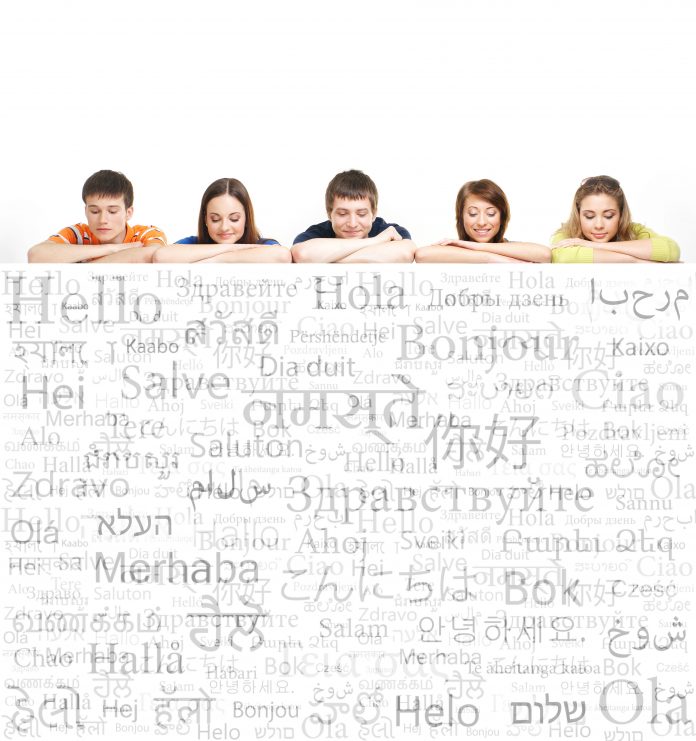How can teachers use students’ knowledge of more than one language to bolster
learning in other languages?
Krupa Raguram
In many countries as well as in India, multilingual students are the norm, not the exception. Classrooms, therefore, tend to be multilingual. A multilingual classroom is one where the students speak a variety of first languages as against a monolingual class where all learners speak the same first language.
Multilingualism
In many large countries including India, school children usually learn multiple languages or are at least bilingual. Most students in the urban areas are multilingual as they are quite fluent in not just
their mother tongue but are also competent users of the state language and the official language(s). In Finland, for instance, children are required to learn at least two foreign languages, one usually being English, in addition to either Swedish or Finnish, both accorded national language status. As
linguistics experts Peter Auer and Li Wei say, “We estimate that most human language users in the world speak more than one language, i.e, they are at least bilingual. In quantitative terms, then,
monolingualism may be the exception and multilingualism the norm…”
Benefits of multilingualism
Being able to use a variety of languages benefits the learners in innumerable ways. It gives them
the confidence to communicate meaningfully with the world around them. It promotes their ability to develop an understanding attitude towards other cultures, which creates a conducive environment for classroom learning. Speaking more than one language from an early age enhances cognitive development and attention span in learners as their brains have to work harder to interpret and use different languages. Further, multilingual learners are better able to apply their language learning strategies when learning a new or a foreign language.
Multilingual classrooms
The commonality in multilingual classrooms is that learners speak a variety of languages and usually
learn English and perhaps another subject through the medium of English. These learners are learning the language of instruction even as they are learning the academic content. So, the learning
in class should focus on developing their language skills to make them proficient in the target language, which in this instance is English.
Implications for teaching
Multilingual students bring these advantages to the classroom: their own languages which act as a
natural reference point for learning new languages, linguistic resources that are at their disposal,
transferable learning strategies from their L1 (language predominantly used in the learner’s environment) learning experience. Professionally there has been a major attitudinal shift towards multilingual learners and classrooms. Here, the onus lies on how teachers value and exploit the
advantages mentioned. A vital professional practice that can contribute to this is to use a
multilingual approach. One can thus ensure a fusion of the affective, cognitive and linguistic
processes that will go a long way in language learning in the classroom.
Practical tips / recommendations
• Analysing learning needs will highlight how students’ knowledge, skills and understanding can be leveraged and strengthened.
• In class, ensure that learners are enabled to use their home languages (when medium of instruction is English/other) to support learning and to demonstrate their understanding of language and the subject content. Such practice could be an individual activity or with peers, having clear goals and feedback that will help students’ learning and achievement. Additional support in the form of teaching
assistants or specialist teachers in class will also provide enhanced learning experience.
• Reading clubs, conversation practice sessions, skill development workshops and such activities outside class hours will ensure further engagement with the language. It would be even more beneficial if teachers fluent in students’ home languages facilitate these sessions.
• Teachers need to adapt teaching approaches by including differentiated tasks and activities and permitting some code-switching, translating and translanguaging practices (alternating between
learners’ languages and English).
Preparing teachers
Initial teacher training should include application-oriented teaching practices, besides theory.
Regular in-service training sessions will boost teachers’ capabilities. Teachers should be educated to
develop an attitudinal change towards multilingual learners. Developing adequate resources and materials to suit pedagogies that support multilingual language (videos, adaptable lesson guidelines, etc) is crucial and further research and reflective practices on the part of the academic team will help.
Substantial research and evidence highlight that successful education requires a major shift in the
approaches towards teaching and learning in multilingual classrooms. This article aims to provide an
insight into such classrooms and to kindle a sense of purposefulness among educators of how they can exploit multilingualism for effective learning of both subject and language.







